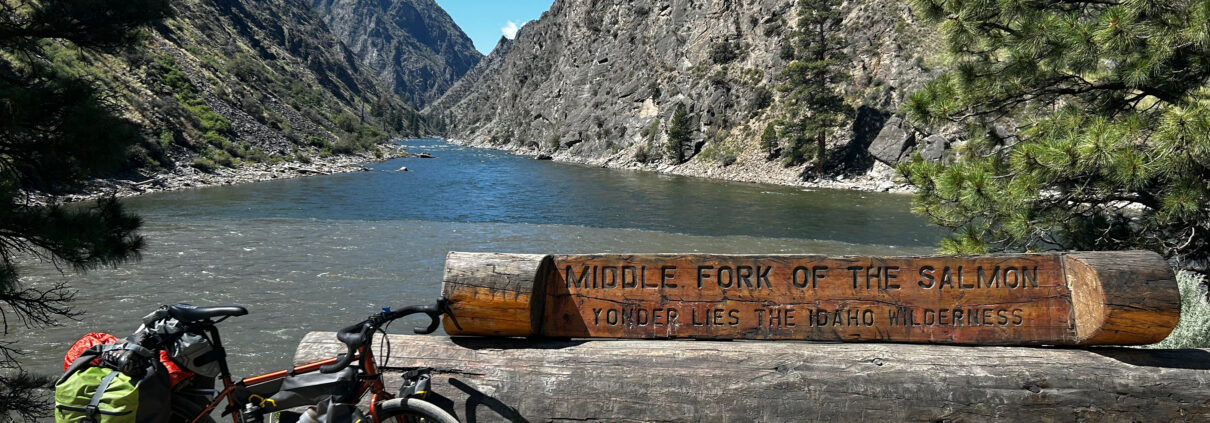Parachuting Beavers and Other Oddities of Innovation
So a couple weeks ago, I boarded a flight to Missoula, Montana. My try-hard intrepid plan was to pedal a gravel bike, loaded with gear, through the captivating Bitterroot Valley, south from Missoula between the Sapphire and Bitterroot mountains three days to meet a week-long rafting and kayaking trip on the Main Salmon River, then cycle on to Boise, ID. I designed this to be about a 12 day adventure—5 days of cycling and 6 days of kayaking in the wilderness of Idaho and Montana.
I rode about 65 miles down the beautiful Bitterroot cycling path, and spent my first night in Darby, Montana, then onwards 55 miles to North Fork, Idaho, an intersection with a general store, campground and a motel. From there, a half-day ride down a 45-mile gravel access road following the Main Salmon River.
My reward at the end of this ride was a group of six experienced guides and 24 adrenaline junkies, all prepped for a six-day adventure on the late June high waters of the Main Salmon River. I left my bike with the outfitters, to be stored in a warehouse waiting for the end of the rafting trip, from where I would ride another two days south to Boise, ID.

However, the real revelation of this adventure was the discovery of the human spirit in its most admirable form. The guides are astonishing humans. Each one in their own fabulous way. Caring, giving, inclusive, patient and accommodating, and yet always expecting you have more within you, encouraging you into the next massive rapid. They demonstrated an intimate understanding of their surroundings, possessed exceptional navigational skills, and approached every situation with an unwavering cheerfulness that was contagious.
One such guide, Ian, was a living library of the local history and ecology. During a hike, he narrated an intriguing tale of ecological innovation—the Beaver Re-population Project, a narrative intertwining the past, present, and future of the Chamberlain Basin of the Frank Church Wilderness—it was a tale with threads of innovation, daring, and well, parachutes.
Centuries ago, this region was rife with beavers—furry engineers whose dam-building prowess contributed to the health of the local ecosystems. However, in their quest for fur to satiate Europe’s fashion market, early fur trappers severely depleted these beaver populations, just so they could be worn as hats and coats by wealthy Europeans.
Beavers are instrumental in shaping ecosystems. Their dam building adds structure to waterways, slowing water flow and creating ponds that gradually release water in dry periods. This process enhances groundwater storage, sediment collection, and enrich habitats for waterfowl, amphibians, mammals, and even offer refuge for juvenile fish. Yet, despite their benefits to ecosystems, farmers think of the beaver as their enemy, a destructive pest, who chew at fences, flood cropland, and should be controlled or removed.
Fast forward to the 1940s and 50s, after the devastation of World War II, a surplus of parachutes provided an unconventional solution to the beaver crisis. In a masterstroke of innovative problem-solving, Elmo Heter, a game warden with the Idaho Department of Fish and Game, initiated a beaver relocation program. The reluctant hero of this endeavor was Geronimo, a beaver who was the first to be air-dropped safely into the wilderness.
Geronimo was not only the star of this audacious plan, but also its test subject. The initial wooden boxes failed to contain the beavers during transit, leading to the sight of free-roaming beavers within the plane. The trial-and-error approach, with Geronimo’s cooperation, eventually led to a successful box design.
The program was a resounding success, leading to a healthy increase in the beaver population in the region. They’ve since worked their magic, restoring the ecological balance of the watershed.
Reflecting on this adventure, here’s a lesson: How can we repurpose excess? When life hands you the oddity of parachutes, don’t just stash them away. Take a page from Elmo Heter’s book, harness your creative problem-solving skills, parachute some beavers into the wilderness. You might restore the health of a watershed environment.
Oh, yes at the end of the rafting expedition, I cycled on two more days to Boise, met up with some dear friends, and flew back to Maine.
_______________________________________________________

My book Small Acts of Leadership, is a Washington Post bestseller! You can grab a copy here. And if you want to learn to apply some of these ideas and be an effective coach for your team, we wrote a course on that too. It’s called Coaching for Managers available over at UDEMY for Business.


